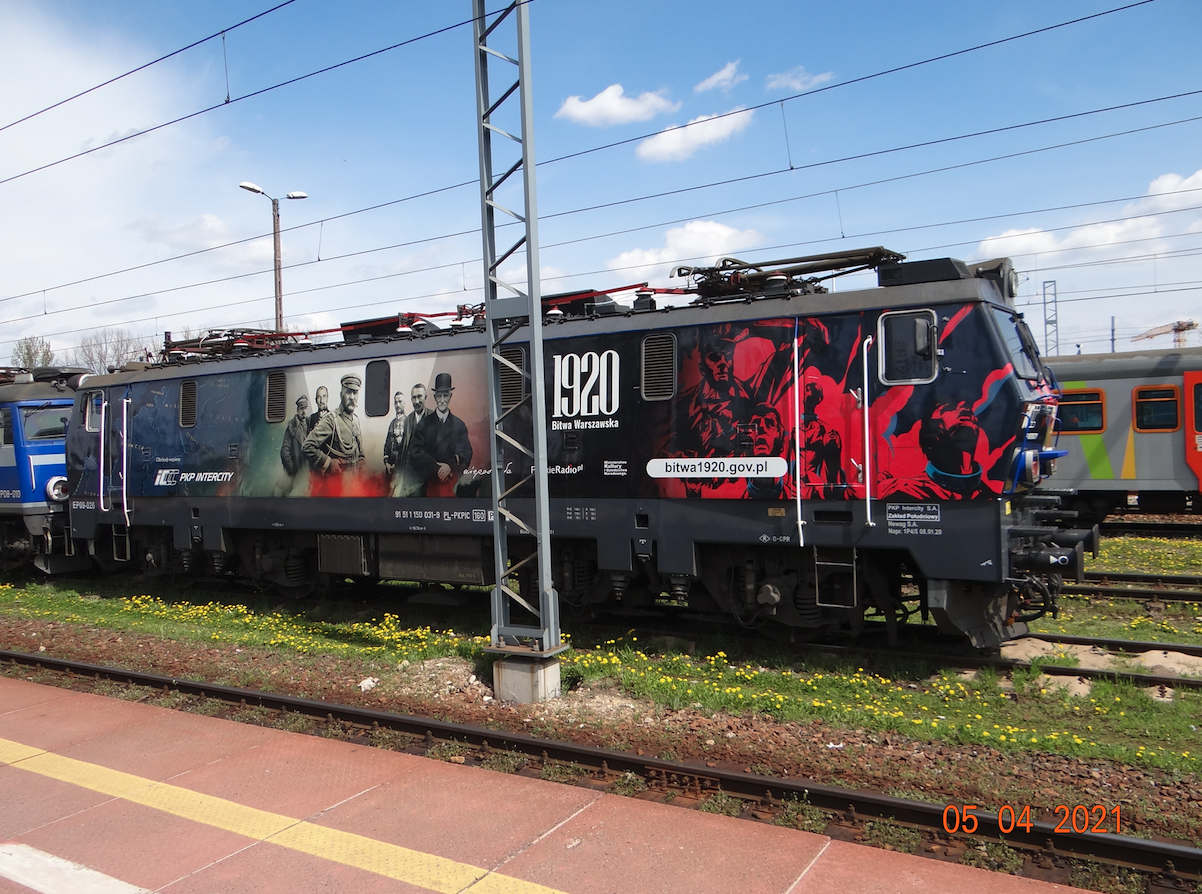Kraków 2021-05-08
The genesis of the EP09 electric locomotive.



60 years in Poland is the time when air transport was in its infancy, and trucks were provided by local transport. The real bloodstream of the national economy was the railway. Permanent electrification of the main railway routes. Good diesel and electric locomotives were produced. The construction of new railway routes Silesia - Warsaw - Tricity and Silesia - Eastern border of Poland were considered (because the Polish economy was dependent on the CCCP economy).
Detailed plans included the construction of the railway line No. 4 from Grodzisk Mazowiecki to Zawiercie, i.e. the Central Railway Main Line (CMK). The documentation was created in 1970. Trail No. 4 was built and it is 223.824 km long. The trail has been adapted to a traveling speed of 250 km / h. The curves on the trail have a radius of 4,000 m and are larger than in France on the TGV routes.
After martial law, in 1984, the first express passenger trains were directed to CMK. Express "Górnik" ran on the route Warsaw - Katowice, which with the locomotive EU05 reached a speed of 140 km / h. The modernized EP05 locomotive reached a speed of 160 km / h, but had a rough gear and lacked power. A new electric locomotive had to be designed and built for the trail. The EP23 locomotive program based on ET22 was abandoned because the analyzes showed that it would not meet expectations. When designing the new electric locomotive, there was no risk of a program failure, as was the case with the SP47 diesel locomotive many years before.
Already in the period 1977–1978, in the Research and Development Center for Rail Vehicles in Poznań, preparatory and design works were carried out for three types of new locomotives. The first is a type 104E project, four-axle Bo'Bo 'passenger system, with a maximum speed of 140 km / h. The second project is type 204E, six-axle Bo'Bo'Bo ', passenger and cargo with speeds of 160 and 120 km / h, respectively. The third project is type 205E, two-section, goods in the Bo'Bo '+ Bo'Bo' system, speed 100 km / h.
Building prototypes.
In 1981, the documentation for the type 104E locomotive was completed, which was marked as EP09 by the Polish State Railways, and was popularly called the "Dziewiątka". The construction of prototypes and serial locomotives was commissioned to the State Wagon Factory (PaFaWag) in Wrocław. In 1986, two prototypes were built. The second prototype was shown at the Poznań International Fair in June 1987.
During the construction of the first locomotive, it was decided to increase the maximum speed from 140 km / h to 160 km / h. For this purpose, a new transmission traction motor - wheels was developed.
For the entire 80 years, the EP09 program had enemies, mostly among PZPR members and in Moscow. But he also had ardent supporters who, thanks to their determination and willpower, brought the program to an end, and I praise them for it. The parameters of the EP09 locomotive raised our railway industry to the level of Western Europe, therefore the program was a threat to the domination of the CCCP. Poland was forced to run the program in cooperation within Comecon. Committed to use components produced in CCCP, Czechoslovakia and Hungary. Among other things, engines with CCCP, which were modernized in Poland. Fortunately, the EP09 program did not fail. Let us remember that if in Moscow they said "тебе не нужно делать, не надо" (you don't have to do, don't do) not a single zloty would be for a new locomotive.
Written by Karol Placha Hetman
